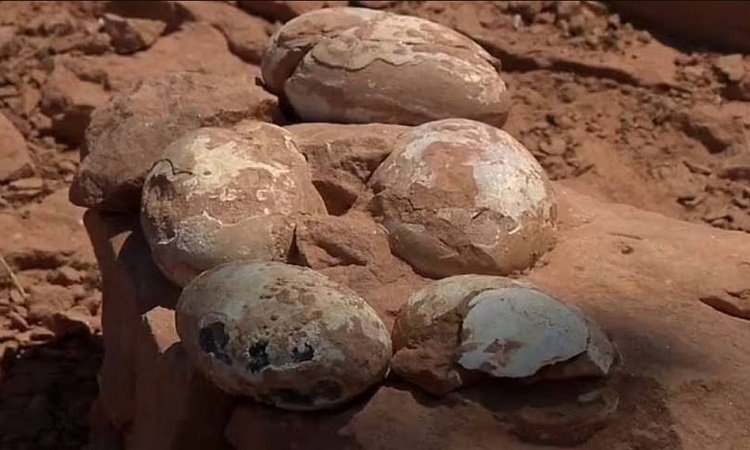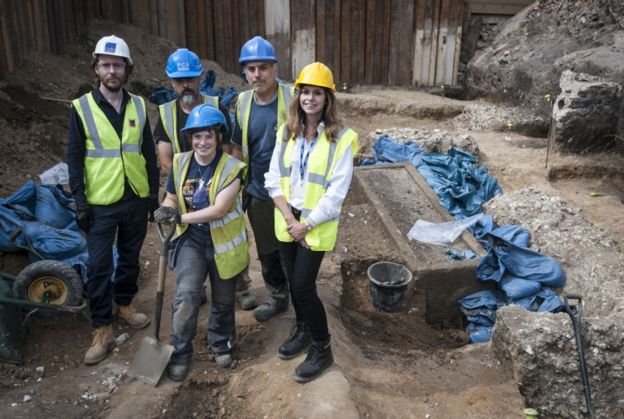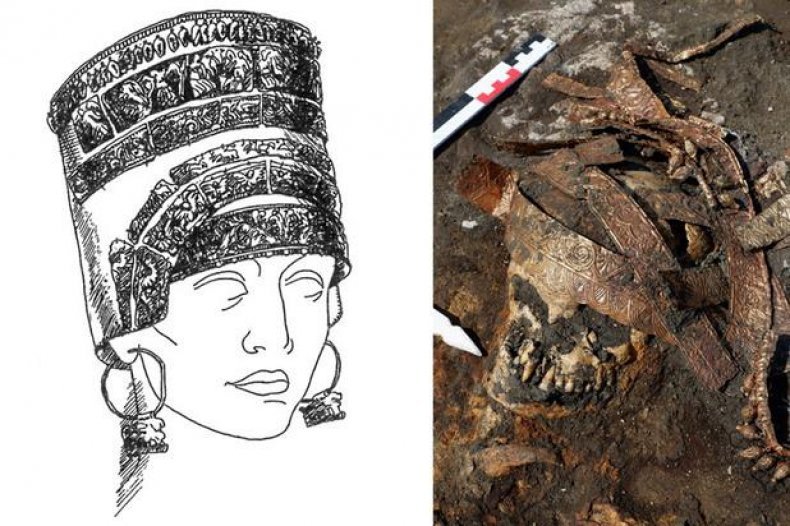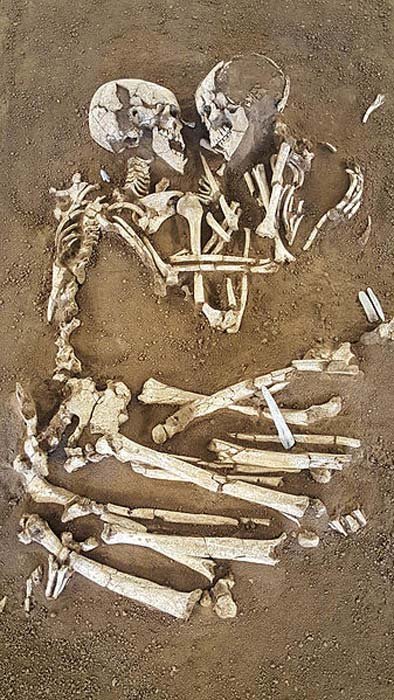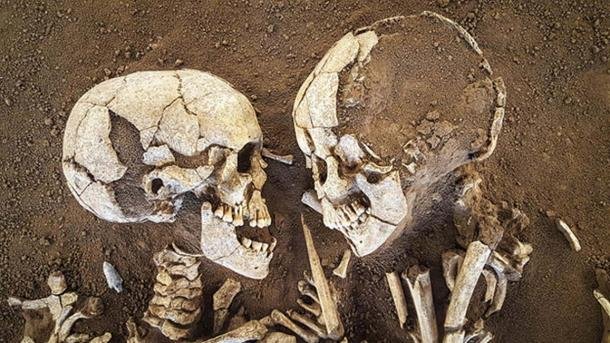Check out the most terrifying archaeological discoveries! This top 10 list of scariest and mysterious ancient artifacts were recently found and will make your hairs stand up!
What Scientists Found Inside This Place Shocked the Whole World
The forgotten lands of Egypt have always been a source of mystery and intrigue. But the answers lurking within could come at a great and dangerous price! From the truth hidden behind the mummification process to the remnants of a lost temple, here are 20 Mysterious Discoveries In Egypt That Scare Scientists!
Discoveries That Could Change History
In today’s video we will be exploring discoveries that could change history. Enjoy!
What They Discovered in this Pond Has Left People Speechless
You’ve most likely seen a pond before, and you might even have one in your backyard! These still and fresh bodies of water are quite relaxing to look at and they also provide a habitat for various animals! Usually, there’s nothing interesting about them, but occasionally, we discover the most unexpected things in these waters.
From the devil’s bath to a terrifying brain-eating organism, here are the 15 strangest things recently discovered in ponds.
Joe Rogan’s Bizarre Theory on the Lost City of Atlantis
In today’s video, we will see what Jimmy Corsetti tells Joe Rogan about the Lost City of Atlantis.
If you type the word "Atlantis" into Google, around 120 million results will pop up. Plato's legend of Atlantis has undoubtedly intrigued many people for a very long time, from scientists to mysticism, with many candidates being cited as the possible location of this lost and sunken civilization. But did such a city ever exist at all? And if yes, where could the ruins be?
In a viral video published in September 2018, Jimmy Corsetti, on his YouTube channel, Bright Insight claimed that the features of a structure, not under the ocean today, but surrounded by the sands of the Sahara, match Plato's description of Atlantis.
Pompeii Facts That Will Blow Your Mind
Mount Vesuvius was responsible for the destruction of the city of Pompeii in 79 AD. Nearly everyone has heard one story or another about arguably the most well-known volcanic eruption in history, but how many of you know what really happened on that fateful day in Pompeii?
This mountain located on the west coast of Italy is one of the most active volcanoes in the world, but the Vesuvius eruption is just one part of the story of the Italian city. How much do you know about daily life before the eruption of Mount Vesuvius? Hopefully, these facts about Pompeii will shed some light on one of the most famous ancient catastrophes in recorded history, as well as the vibrant society that preceded it.
Why Zulu Shields are much more than just a shield
In the video below we will have an overview of the shields used by Zulu Warriors. Enjoy!
Nefertiti: Facial Reconstructions & History Documentary
Nefertiti has one of the most famous faces of the ancient world. Her bust has fascinated millions and inspired a love of Egyptology and Egyptian history in many. What did Nefertiti do? What is her legacy? Do we have her mummy? Is the Berlin bust fake? Finally, what did she really look like? We will take a look at some facial reconstructions together.
12 Most Amazing And Unexpected Abandoned Objects
Everything that's ever built has the potential to one day become abandoned. That's as true of whole cities as it is of objects you can fit inside the palm of your hand. Even the most loved of cities, buildings, and artefacts will one day be forgotten by those who built them and loved them, and then they too might end up on a video like this one. Let's begin our abandonment world tour!
The Three Men In The Bible That Never Died
In the following video we will be discussing about the three men in the Bible that never died. Watch for more and enjoy!
Researchers Discover More Than 100 'Herd' Dinosaur Eggs In Argentina
Jurassic Park, here we come. Archeologists have discovered more than 100 dinosaur eggs, many with intact embryos, in the southern Patagonia region of Argentina in what they say is the oldest known evidence of a complex dinosaur herd.
Scientists also uncovered fossilized bones of 80 dinosaurs of all ages nearby, providing further evidence of a community of a Jurassic-era species called Mussaurus patagonicus, according to the research published last month in the British journal Scientific Reports.
The bones were segregated by age, with eggs in a common nesting ground. Juveniles likely were left in “schools” while adults foraged, according to the researchers.
“This may mean that the young were not following their parents in a small family structure,” said Jahandar Ramezani, a scientist at the Massachusetts Institute of Technology who participated in the research. “There’s a larger community structure, where adults shared and took part in raising the whole community.”
The “discoveries indicate the presence of social cohesion throughout life and age-segregation within a herd structure, in addition to colonial nesting behavior,” the article says. “These findings provide the earliest evidence of complex social behavior in Dinosauria.”
The two-legged adult herbivores had a long neck, grew to lengths of some 20 feet, and weighed about 1.5 tons. They walked the earth some 200 million years ago, and were functioning in herds 40 million years earlier than previously known.
Lead researcher Diego Pol, a paleontologist of the Edigio Feruglio Paleontological Museum in Trelew, Argentina, called the archeology site “one of a kind.” It’s a “pretty dramatic scene from 193 million years ago that was frozen in time,” he added.
The nesting ground includes “delicate and tiny dinosaur skeletons as well as eggs with embryos inside,” Pol told Reuters.
The “specimens we have found showed that herd behavior was present in long-necked dinosaurs since their early history,” Pol added. “These were social animals, and we think this may be an important factor to explain their success.”
When their luck ran out, the herd most likely died from a mass-death event like a drought, archeologists believe.
Another team of archeologists announced last month that they had extracted 30 titanosaur eggs from fossilized nests in a two-ton rock in northern Spain. There may be another 70 eggs still buried in nests deeper within the rock, which indicates a communal nesting site.
Titanosaurs were long-tailed four-legged herbivores with necks up to 66 feet long.
This Giant Snake Rock in Thailand Is a Fascination of Many — Is It an Actual Fossil?
If you ever find yourself exploring Thailand sometime in the future and are curious about attractions that don’t involve shopping and temples, head to Phu Langka National Park. This park is famous for the oh-so-eerie Naka Cave where a big snake-like rock quietly sits.
Closely resembling a serpent, the snake rock is shrouded in mystery as many local folks believe that it was once a real giant snake.
The giant snake rock in Naka Cave, Thailand
Naka Cave itself is reportedly home to several myths and legends, many of them imagined due to a part of the cave that looks strangely like a serpent. There is a specific stone slab that resembles a python’s head, while giant rocks with scaly texture look as if they’re the snake’s coiling body.
In Buddhist lore, the giant snake rock takes after the mythological snake called “Naga.” A naga is said to be half-human and half-snake, dwelling in the netherworld and occasionally taking the form of a human. Legend has it that the Mekong River in northeastern Thailand and Laos was actually created by two Naga kings,
slithering in the area that’s now part of the Phu Langka National Park. If we’re to stay faithful to the legends of yore, then just maybe, the snake rock might have been one of the Naga kings resigned to a long slumber.
Another theoretical folklore that attempts to explain the giant snake rock is less cultural but a bit more daring. Some tourists actually speculate that the giant rock was once a titanoboa, petrified due to volcanic eruptions. A titanoboa, as you might already know, is considered to be the largest snake ever to roam the earth before its extinction. Given the size of the snake rock, this theory isn’t hard to imagine.
But alas, there is a scientific explanation for everything. According to Phu Langka National Park officials, the giant snake rock is actually made up of sun-cracked rocks that are more than 100,000 years old. The sharp temperature differences between day and night caused the rock to expand, contract, and eventually crack. Matched with water erosion, the scale-like pattern of the giant snake rock was eventually formed.
This is an interesting attraction in Thailand, don’t you think? It’s fairly new too, since it was just discovered in 2020. Make sure to update your Thailand itinerary with the giant snake rock of Naka Cave, Thailand!
Caligula’s Stunning 2,000-Year-Old Sapphire Ring Tells Of A Dramatic Love Story
It's hard not to admire this stunning 2,000-year-old sapphire ring. It's an ancient Roman treasure believed to have once belonged to Caligula, the third Roman emperor, ruling from 37 to 41.
Named Gaius Julius Caesar after Julius Caesar, the Roman emperor acquired the nickname "Caligula" (meaning "little soldier's boot").
Today, Caligula is remembered as an infamous emperor who was smart but also cruel. Whether he was insane or not is still debated, but there is no doubt he was one of the most brutal emperors in ancient Rome. He forced his contemporaries to worship him as a god, committed incest with his sisters, and wanted to make his horse a consul. Torture and executions were a daily routine during his brief reign.
If historical accounts of Caligula's behavior are based on actual events, one can say this precious ring is just as beautiful as Caligula was awful.
The sky blue hololith, made from a piece of precious stone, is believed to depict Caesonia, Caligula's fourth and last wife. Rumors said she was so beautiful that the emperor told her to parade naked in front of his friends occasionally.
Caesonia must have been extraordinary because Suetonius, a Roman historian, described her as "a woman of reckless extravagance and wantonness."
Caligula's love story with Caesonia resulted in the birth of Julia Drusilla. Caligula was deeply in love with Caesonia, and she was the emperor's most important confidant. However, the couple was surrounded by enemies who wished to remove Caligula from power.
Caligula was assassinated due to a conspiracy by officers of the Praetorian Guard led by Cassius Chaerea, senators, and courtiers. Caesonia and her daughter were murdered as well. Different sources report different versions of the murder. According to some, Caligula was stabbed in the chest. Others say he was pierced with a sword between the neck and shoulder.
"According to Seneca, Chaerea managed to decapitate the emperor with one blow, but many conspirators surrounded the emperor and thrust their swords into the corpse anyway.
Immediately following the murder, Chaerea sent a tribune named Lupus to kill Caesonia and Drusilla, the emperor's young daughter.
Reports say that the empress faced the blow courageously and that the little girl was dashed against a wall. Then Chaerea and Sabinus, fearful of what would follow, fled into the interior of the palace complex and from there, by a different route, into the city. "1
Caligula's beautiful sapphire ring was part of the collection of the Earl of Arundel from 1637 to 1762 when it became one of the famous 'Marlborough Gems.'
Not surprisingly, the ring caused a sensation when it was made available for purchase in an auction by Royal jewelers Wartski.
"This ring is one of the prestigious 'Marlborough Gems,' having previously been in the collection of the Earl of Arundel. It is crafted entirely of sapphire. Very few hololiths exist, and I would argue this is the best example you can find. We believe it belonged to the debauched Emperor Caligula, and the engraving shows his final wife Caesonia," Kieran McCarthy, Wartski director, said.
Caligula's ring was finally sold for close to £500,000 in 2019.
Ancient roman sarcophagus found at London building site
The 1,600-year-old coffin found near Borough Market is thought to contain the remains of a member of nobility.
Archaeologists have been unable to identify the body as the stone coffin has been left filled with soil after being robbed, experts believe.
The sarcophagus will now be taken to the Museum of London's archive for analysis.
The coffin was found several metres underground with its lid slid open, which indicates it was plundered by 18th century thieves.
Gillian King, senior planner for archaeology at Southwark Council, said she hoped the grave robbers "have left the things that were of small value to them but great value to us as archaeologists".
The grave owner must have been "very wealthy and have had a lot of social status to be honoured with not just a sarcophagus, but one that was built into the walls of a mausoleum" Ms King said.
She added: "We always knew this site had the potential for a Roman cemetery, but we never knew there would be a sarcophagus."
The coffin was found on Swan Street last month after the council told developers building new flats on the site to fund an archaeological dig.
Researchers discovered the coffin six months into the dig as they were due to finish their search.
Experts at the Museum of London will now test and date the bones and soil inside.
Discovering a strange hat on the tomb of the Scythians in Russia makes everyone panic
Archaeologists excavating the Middle Don burial ground of Devitsa V in the Ostrogozhsky District of the Voronezh region, Russia, have discovered a unique silver plate depicting winged Scythian gods and griffins.
The site, which contains 19 burial mounds, was discovered in 2000 and has been the subject of excavations led by the Archaeological Institute of the Russian Academy of Sciences since 2010. Several other significant discoveries have been made over the last decade, including a barrow containing a female warrior in 2019.
The silver plate discovered during the 2021 field season was found inside Mound 7, located in the central part of the cemetery. The main burial in this mound dates to the 4th century BC and belonged to a man in his forties. The tomb had been plundered by grave robbers in antiquity, but several rich grave goods survived thanks to the collapse of the roof during the robbery. Among the objects buried with the man were an iron knife, a horse rib, a spearhead, and three javelin heads, as well as fragments of horse harnesses, a moulded cup, a large, black-glazed vessel, and the jaw of a young bear, thought to be related to the presence of a bear cult in the Scythian Middle Don culture.
The square silver plate, which measures 34.7cm long and 7.5cm wide in the middle, was found in the northeast part of the grave, away from other the items. It appears to have originally been connected by small silver nails to a wooden base, although this has now been almost entirely lost. The central section of the plate depicts a winged figure wearing a horned headdress or crown, thought to be the goddess of animal and human fertility: Argimpasa, Cybele, or the Great Goddess, surrounded by eagle-headed griffins.
The figures are depicted in a style that combines the traditions of Asia Minor and ancient Greece, resembling finds from other Scythian barrows in the Northern Sea region, Dnieper forest-steppe region, and the Northern Caucasus. The left side of the object is made up of two square plates decorated with depictions of syncretic creatures (combining features from several different species) in a heraldic pose. On the right, two round buckles are attached to the plate, each depicting an anthropomorphic figure wearing a crown, flanked by two griffins.
At present, it remains unknown who these figures represent and what kind of object the plate originally adorned, but it is nonetheless a significant discovery as the site of Devitsa V has not yet produced any other depictions of gods from the Scythian pantheon, and it is unusual to find an object like this so far to the north-east of the main Scythian centres.
Top 10 Dark North Sentinel Island Theories
North Sentinel island is regarded as one of the most dangerous islands in the world. Why? Well, its home to a tribe that will kill anyone who dares to intrude on their land. They live their own life completely isolated from the rest of the world. In fact, they still live a hunter-gatherer lifestyle.
As a result we hardly know much about them, but in today's video let's explore some scary theories people have come up with surrounding this island… from the Sentinelese practicing cannibalism to the island housing a secret facility. Let's talk about these and more only in today's video!
Archaeologists Discovered Something Gigantic That No One Can Explain
Giants have long been a part of human mythology and folklore, but could they have actually existed in real life? Throughout history, there have been numerous discoveries of remains that suggest the existence of giants. However, many of these discoveries have been met with skepticism and controversy, with some experts arguing that they are simply the result of misinterpreting normal-sized human remains or even outright hoaxes.
Today, we're going to be talking about some of the most mysterious archaeological discoveries of giants. Enjoy!
Christian Denominations Family Tree | Origins & Early Schisms
In the following video we will talk about the Christian denominations family tree, and more specifically about the origins and early schisms. Enjoy!
Norsuntepe: An extremely mysterious prehistoric place in Turkey
Norsuntepe is located in the Keban area (modern eastern Turkey) on the Upper Euphrates, about 25 km from Elazig.
The crown of the hill had an area of approximately 500 m to 300 m, within which settlement traces were detectable by archaeologists.
Excavations at Norsuntepe were conducted between 1968 and 1974 by the German Archaeological Institute archaeologists led by Harald Hauptmann, the Heidelberg professor of Prehistory and Early History.
The field works had to be finished by 1974 because of the construction of the Keban Dam works and the rising water level.
In the excavations of Norsuntepe, archaeologists conducted investigations on the extractive metallurgy of copper, arsenic, and a lustrous gray metalloid found in nature and known as antimony.
They also analyzed excavated smelting products from Norsuntepe (Keban) area on the Upper Euphrates.
In Anatolia, most artifacts of a late Chalcolithic date were made of unalloyed copper. Some others were arsenical coppers with low arsenic content.
At Norsuntepe (a site now under the waters of Keban dam), smelting furnaces, copper ore, slag, fragments of clay crucibles or molds, and finished metal artifacts were found in the courtyards and buildings probably belonging to metal workers.
Norsuntepe was probably a fortified site, with mudbrick houses finished with plaster, and in some instances, they had wall paintings.
Archaeologists identified 40 settlement layers from different periods, namely the late Chalcolithic (4,000- 3,000 BC), through all phases of the Bronze Age until an Urartian settlement in the Iron Age.
Norsuntepe was one of the most important sites of this period.
The Chalcolithic (sometimes referred to as the 'Copper Age') was an important period with achievements, of which the most striking development was the extensive use of copper.
Until this period, natural stones were the only material humankind used to make their weapons.
Later, they learned to process and shape this metal copper to make solid weapons and ornamentation. We also see a considerable increase in the number of towns scattered across the area.
The new towns of this period were usually built on the water or in rich valleys.
The great mother goddess of Asia Minor was the main deity, and they made many figurines of this goddess, which they used in their religious rituals. The burials within the houses of the preceding Neolithic period now occur outside the towns.
After the Iron Age, which supplied several richly furnished graves, the settlement was abandoned and destroyed by fire.
Neolithic Romeo and Juliet? The Star-Crossed Lovers of Valdaro
The “Lovers of Valdaro” are a pair of human skeletons that were discovered in 2007 by a team of archaeologists at a Neolithic tomb in Italy. The two skeletons appear to have died while they were gazing into one another’s eyes and hugging each other, thus reminiscent of a “lovers’ embrace.”
Their Embrace Amazingly Goes Back 6,000 Years
For 6,000 years, two young lovers had been locked in an eternal embrace, hidden from the eyes of the world. Despite their embrace lasting six millennia, the Lovers of Valdaro only became known ten years ago, when their tomb was discovered near Mantua, in the northern region of Lombardy.
Digging in the village of Valdaro, a team of archaeologists led by Elena Maria Menotti found a double burial: a young man and woman considered to be about 20 years of age, huddled close together, face to face, their arms and legs entwined, as if they were embracing.
What’s even more impressive, double burials from the Neolithic period are very uncommon, and the position of the couple is certainly unique. Furthermore, it is the only example of a double burial in Northern Italy found to date. When the “lovers” were discovered, photos of their embrace were published on media worldwide causing great excitement, especially since the discovery took place near Valentine’s Day.
How Did the Young Couple Die?
Historians have not been able to determine how the two died, but, in popular imagination, the couple have come to symbolize Romeo and Juliet of a prehistoric age, star-crossed lovers who took their own lives.
This theory is helped along by the fact that Shakespeare's Romeo and Juliet was set in nearby Verona, that Romeo was exiled to Mantua, where he was told that Juliet was dead, and that Giuseppe Verdi’s opera Rigoletto, another story of star-crossed love and death, was set in Mantua too.
But subsequent research showed that the skeletons do not have any signs of creating their own violent deaths. Elena Maria Menotti, head of the excavation, stated at the time ,
"We have never found a man and a woman embraced before and this is a unique find. We have found plenty of women embracing children but never a couple. Much less a couple hugging΄and they really are hugging. It's possible that the man died first and then the woman was killed in sacrifice to accompany his soul. From an initial examination they appear young as their teeth are not worn down but we have sent the remains to a laboratory to establish their age at the time of death. They are face to face and their arms and legs are entwined and they are really hugging.”
The Archaeological Value of this Find is Truly Immeasurable
Romantic interpretations aside, their discovery remains one of the most remarkable finds in Neolithic archaeology and an excited Menotti made sure to point that out too,
“I am so thrilled at this find. I have been involved in lots of digs all over Italy but nothing has excited me as much as this. I've been doing this job for 25 years. I've done digs at Pompeii, all the famous sites. But I've never been so moved because this is the discovery of something special."
Although it might not be the only Neolithic burial to include more than one person, double burials in that period are extremely rare, while the pose and the positioning of the couple make the find even more unique. After an initial examination of the bones, experts determined that the man and woman were not only young, but also short (especially the male) around 5’2” (158 cm) tall each.
The examination also revealed that the man has an arrow in his spinal column while the woman has an arrow head in her side. Additionally, researchers speculate that 5000 years ago the area around Mantua was marshland and crisscrossed by rivers, so the environment was ideal and helped to preserve the skeletons in their near-perfect state.
The Mystery Might Never be Solved but the Couple Found a New Home
The mystery of their death might never be solved, but many people from around the world are willing to travel to Italy to see the most ancient romantic couple.
The skeletons were displayed briefly in public for the first time in September 2011 at the entrance of Mantua's Archaeological Museum. But the association “Lovers in Mantua” campaigned intensely for a long time for their right to have a room of their own, and now visitors can now see the Lovers of Valdaro at the Archaeological Museum of Mantua, where they are on permanent display inside a shatterproof glass case.

